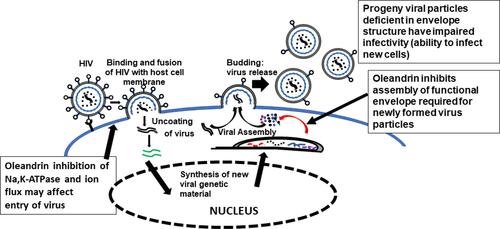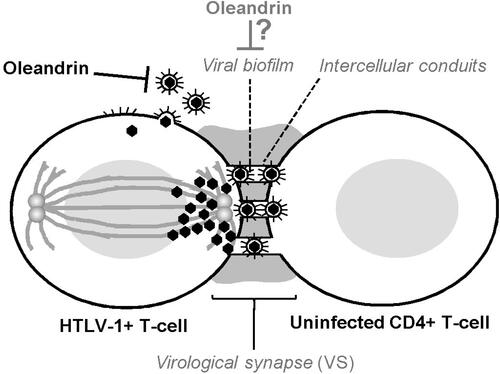Figures & data
Table 1 Antiviral Activity of Oleandrin and Extracts of N. oleander
Figure 1 Anti-HIV activity of oleandrin. This diagram depicts production of virus particles from oleandrin treated HIV-infected cells. During virus production, the viral envelope protein is synthesized in the cytoplasm and transported to the surface of the infected cells. Oleandrin inhibits this process making fewer envelope protein molecules available for incorporation on to the progeny virus particles during their assembly and budding out of the infected cells.

Figure 2 Oleandrin inhibits HTLV-1 infectivity and virological synapse formation. The figure illustrates the intercellular transmission of infectious HTLV-1 particles across the virological synapse (VS). The polarization of HTLV-1 p19-Gag core particles along cellular microtubules toward the intercellular junction is indicated. The intercellular conduits/nanotubules which facilitate the trafficking of virus particles between an HTLV-1-infected cell and an uninfected target CD4+ T-cell are shown. The viral glycan-rich biofilm surrounding the VS is also depicted. Oleandrin inhibits the incorporation of the viral glycoprotein into mature extracellular HTLV-1 particles budding from an infected cell and could also inhibit the synthesis of the viral biofilm to prevent VS-formation.Citation19

